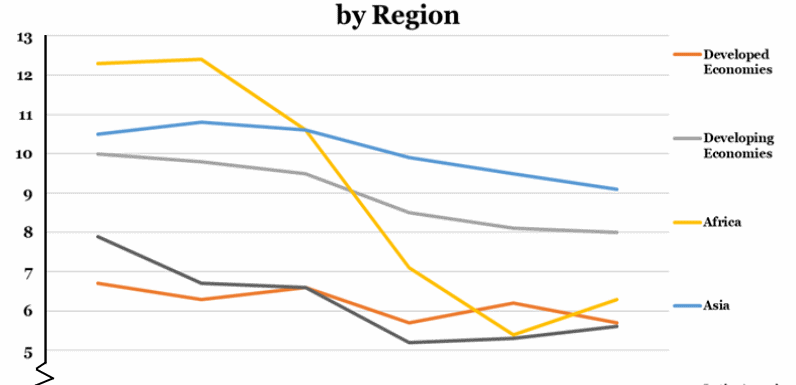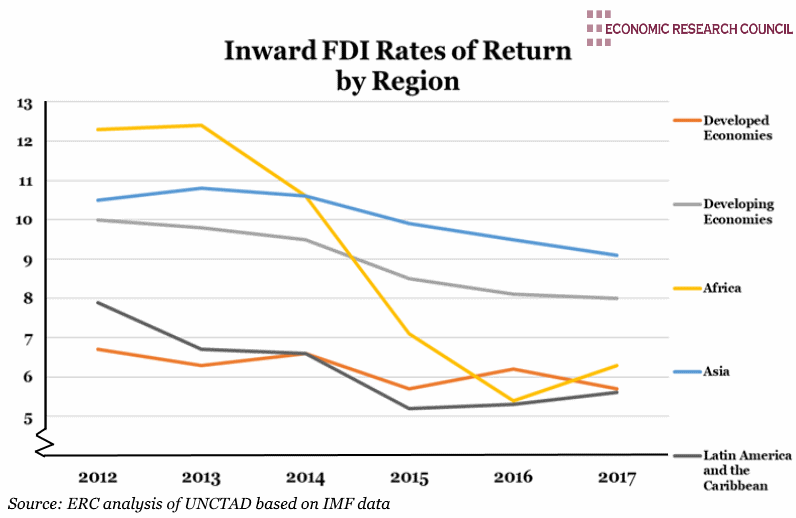Summary
Global FDI rate of return (RoR)has dropped from an average of 8.1% in 2012 to 6.7% in 2017, the largest drop occurring between 2014 and 2015 when RoR dropped from 7.9% to 6.8%. Although diminishing returns have characterised this time period across all regions, the story is by far the worst in African economies, where between 2013 and 2016, rate of return on FDI dropped by 56%. Predictably, FDI in developed economies have returns that are among the lowest, but most stable, ranging from 6.7% in 2012 to 5.7% in 2017. Returns from FDI in developing economies dropped by a fifth in the period shown. Latin America and the Caribbean economies have had the second worst performance of the groups shown, dropping from a peak of 7.9% in 2012 to 5.2% within just 3 years.
What does the chart show?
The chart shows annualised rates of return in percentages on inward FDI since 2012 divided by region. The rate of return is calculated by dividing the total FDI income for a given year by the average of the end-of-year positions for that and the preceding year at book value.
Why is the chart interesting?
The United Nations Conference on Trade and Development (UNCTAD) reported in June that investors spent 23% less globally in 2017 compared to the previous year. FDI returns in Africa, Asia (particularly the west), Latin America and the Caribbean have been blighted by the drop in the price of oil and other commodities. In Latin America and the Caribbean, foreign investment into natural resources suffered a drop of 62% since 2011, initially due to the fall in commodity prices but likely also hampered by political scandal in Brazil and instability in Venezuela. African FDI has declined in volume, again due to the commodity price collapse. The picture on the African continent is one of unequal distribution, with Angola, Egypt, Nigeria, Ghana and Ethiopia accounting for over half FDI inflows. In the last year, discoveries of new gas in Egypt has bolstered investment and investment reforms in Algeria with the discovery of oil have attracted large investments into North Africa, boosting the region’s foreign investments to a $14 billion total.


